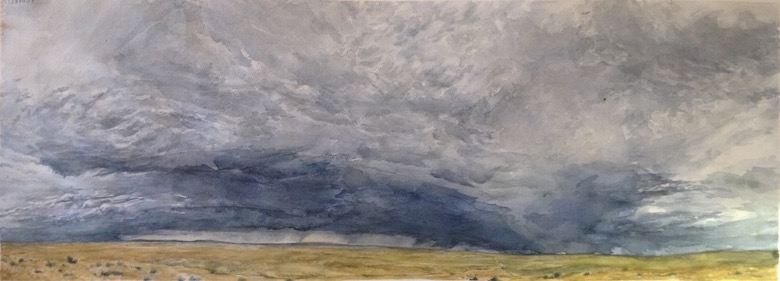
It’s July, and I’m sitting in a backyard in Flagstaff, Arizona, when I feel something wet hit my arm. It’s the first drop of rain that’s touched my skin in months, and the pleasure is exquisite. Not just the pleasure of water touching my moisture-starved body, but the sight of thunderclouds after weeks of uninterrupted blue skies. The smell of rain hitting dry pavement. The building drumbeat of a summer storm.
Except this isn’t an ordinary summer storm. It’s the start of monsoon season in the American Southwest.
Although the word monsoon—from the Arabic “mausim,” meaning season—conjures images of tropical downpours in places like India and Southeast Asia, the North American Monsoon is equally prolific. Each summer, high pressure sitting over the southern plains circulates moisture from the Gulf of Mexico into Mexico and the Southwest, where it gathers into powerful, cyclical storms that strike most afternoons from July to September, dropping up to half the region’s rainfall. What makes the monsoon so physically satisfying, however, isn’t just the water. It’s the long, slow build up that starts months earlier, with the onset of spring.
Spring in the Southwest rarely brings gentle, nourishing rains. Instead, violent winds sweep across the desert and blow away the last scraps of winter, ushering in a months-long spell of aridity. By April, the days are almost invariably warm and sunny—pleasant weather, at first. But with each passing week, the sun grows more intense, until its rays feel like a curse. Grasses and flowers shrivel. The ground crackles like a piece of kiln-fired pottery. Every living thing is thirsty.
This is the dry season. The season of waiting.
This year, the dry season was exceptionally dry. Snowpack in the Four Corners hovered around 38 percent of normal, and the desiccated vegetation fueled several large wildfires that smothered the region in smoke. The weeks leading to the monsoon felt more drawn out and desperate than usual.
And then, beginning with that first drop in my friend’s backyard in Flagstaff, monsoon season arrived, as sudden as a thunderclap. Clouds built over the mountains and came tumbling into the valleys, spitting walls of rain and gusts of wind. The fires that had been gnawing through the forest laid back. Back home, I stood in the rain with my arms spread and palms facing the sky, inhaling the smells of pine needles and wet sage. Rivulets ran over my skin like so many fingers.
Water as a medium is inherently sensual, and in the arid landscapes of the Southwest, it’s even more so. We’ve coined a word—petrichor—for the uniquely delicious smell of rain after a long period of dry heat. Yet sensual also connotes sexual, and rain in the desert flirts with that too: After months of anticipation, the storm cells are a climax, the downpour a release. In some places, the desert explodes with rainforest-like lushness, and strange animals creep from their underground lairs—scorpion-like arachnids, toads whose calls sound like dying lambs, beetles that secrete a skin-blistering liquid. Many take advantage of the monsoon’s fecundity to mate. For a few months, the desert throbs with sex.
Humans, too, perceive the fruits of desert rain as erotic: Think of Georgia O’Keeffe’s flowers, or the feminine curves of slot canyons carved by flash floods. In the book “Home Ground: Language for an American Landscape,” Pattiann Rogers writes of natural rock formations that store pools of rainwater. The pools are called kiss tanks because humans and animals alike “put their dry lips and thirsty mouths to [the] water… with a kind of passion.”
And because sex is often not just about sex, but about power, the monsoons bring that, too: a raging flash flood that scouring an arroyo, or the threatening electricity of lightning. When it rains in the desert, we are humbled. We are grateful. And maybe now that it’s not so damn hot, we’re also a little turned on.
Painting of thunderstorm courtesy of Sarah Gilman